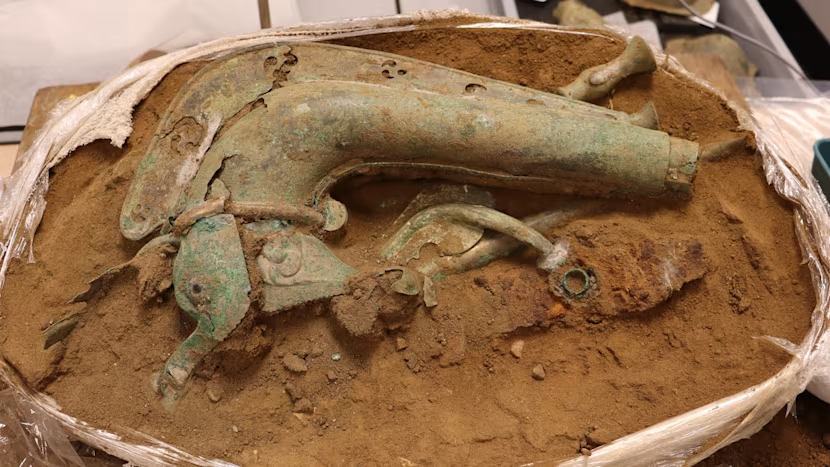The largest fossil ever discovered from its era is an 8-foot-long cranium that was uncovered in the Augusta Mountains of Nevada. The research team thinks the amazing find may shed light on how contemporary whales evolved and how to protect their presence in our oceans.
The skull of the cymbospondylus youngorum.
The fossil, a newly identified species of an aquatic reptile called an ichthyosaur, dates to about 246 million years ago. According to the research team, the largest animal from that era discovered both on land and in the sea is now known as cymbospondylus youngorum. It presently has the distinction of being the first enormous mammal to live on Earth.
The creature's forefin, shoulder, and backbone were also discovered in the excavation along with its well-preserved skull. The American Association for the Advancement of Science and the Natural History Museums of Los Angeles County issued a report on Thursday that assessed the ichthyosaur to be more than 55 feet long, or the size of a big sperm whale.
Because of its long snout and conical teeth, ichthyosaurs are thought to have consumed fish and squid. It might have also hunted younger individuals of its kind and smaller sea reptiles.
According to paleontologists, the ichthyosaurs multiplied within a few million years, and their expansion was partly fueled by a sharp rise in their prey, which included ammonoids and conodonts that resembled eels. Following a major catastrophe known as the end-Permian catastrophe, these creatures' populations exploded.
"That's one way this study stands out, as it allowed us to explore and gain some additional insight into body size evolution within these groups of marine tetrapods," said Dr. Jorge Velez-Juarbe, an associate curator at the Natural History Museum of Los Angeles County.
"A testament to the resilience of life in the oceans after the worst mass extinction in Earth's history," he continued, the cymbospondylus youngorum.
Lene Delsett and Nicholas Pyenson, the study's co-authors, stated that the study "tells us that ocean giants are not guaranteed features of marine ecosystems, which is a valuable lesson for all of us." Particularly if we wish to maintain the existence of the last ocean giants among us that benefit our own wellbeing.






